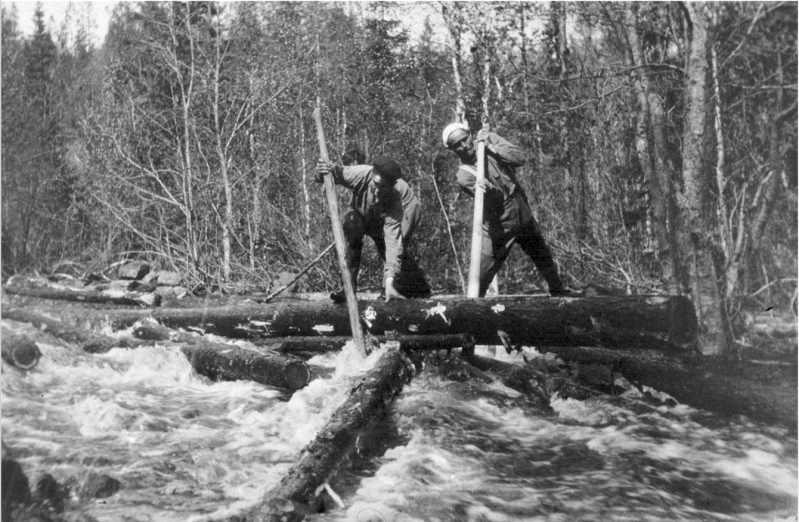Meadowsweet – good indication of restored river success

During the timber-floating era in rivers and streams, tributaries were cleared from all obstacles. Now, efforts have been made to restore many river reaches after these interferences. In order to measure the success of such restorations, three researchers at Umeå University in Sweden have studied how to use meadowsweet to examine restoration outcomes. These results are published in the journal Ecohydrology.
The Swedish timber-floating era is long since history, and since, huge effort has been made into restoring affected river reaches. To do so in the best possible manner, it is important to follow up on the results of the restorations. Evaluations often focus on fish and aquatic insects whereas riparian and aquatic plants are rarely included. If there are no riparian plants, life for aquatic species is made very difficult. Therefore, riparian plants should be used as a measurement of the well-being of the watercourses.
"Using plants as a measurement of the health of nature, the so-called phytometer approach, is a rather unused method. What happens is that we breed a number of small seedlings and plant them in a variety of places in nature. After that, we follow their development. If the speed of their growth varies, it suggests that certain areas have different properties," says Anna Dietrich.
Anna Dietrich and her colleagues planted young seedlings of meadowsweet and purple moor grass on riparian zones of river reaches affected by timber-floating as well as restored rivers. They then compared how the plants survived and grew.
"Meadowsweet seedlings grew better on riparian areas by restored rivers and became both higher and sturdier than seedlings planted in channelized river reaches. Growth of stems and leaves was positively correlated to the restoration, which led to higher water levels in the summer. Longer floods in the spring also benefited the growth of roots, probably because the plants needed strong roots to hold on or else be flushed away," says Anna Dietrich.
Purple moor grass did not respond as clearly to restorations as the meadowsweet did apart from the fact that it grew better on restored rather than channalized riparian zones during the end of season.
Anna Dietrich took her doctorate at Umeå University in 2013 on the subject of phytometers, i.e. plants that can measure environmental changes. This is the publication of her fourth and last dissertation article.
About channelization and restoration:
When the Swedish forest industry expanded in the 19th and 20th centuries, tonnes of timber was shipped in rivers. Boulders, rocks and other obstacles made timber-floating cumbersome, which was solved by clearing and straightening the rivers to make them more similar to canals. The channels became homogenous, the water flow rapid and floods short but intense. Riparian zones suffered the consequences. In some parts, they were worn and torn by the rapid waterflow and by the actual timber. In other places they were left to dry behind man-made stone barriers. Plants, fish and other organisms were affected by the changes and some species even dissapeared completely from these waters as a result of the river clearings that were made to facilitate timber-floating.
When restoring a watercourse, you create a more complex nature by returning boulders and gravel in watercourse and open up side channels again. That results in slower water flows, the water stays for longer in higher parts of watercourses where the number of floods in summer also increases. Water conditions are hence more similar to those of unspoiled watercourses. The quality of the soil is also improved after restoration. Based upon these facts, there is good hope that plants and animals will be able to re-establish. Restoration of watercourses after timber-floating is therefore highly ranked by conservationist authorities and organisations.
More information: Anna L. Dietrich et al. A phytometer study evaluating the effects of stream restoration on riparian vegetation, Ecohydrology (2016). DOI: 10.1002/eco.1663
Provided by Umea University

















